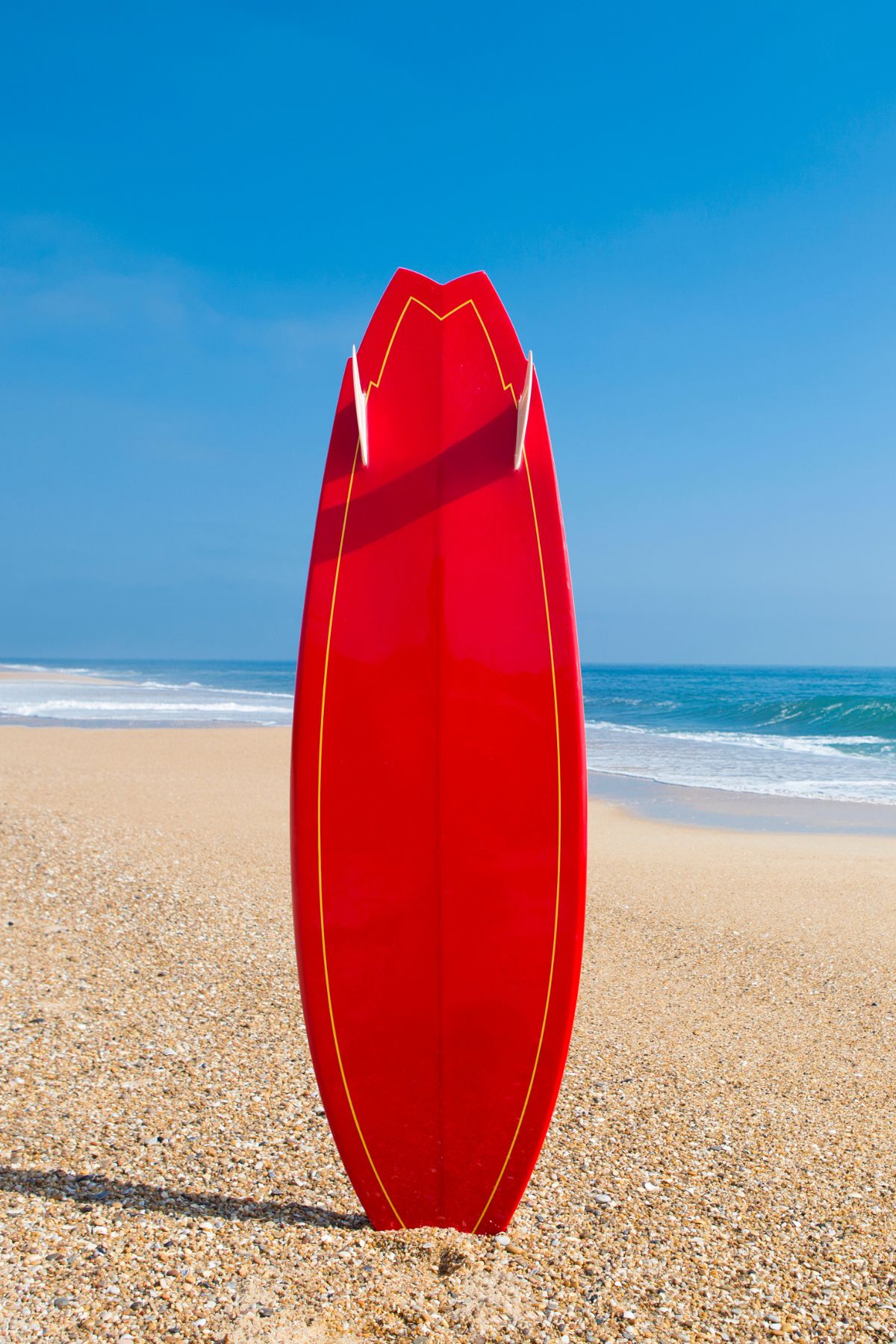A Surfboard Volume Calculator is the fastest and most accurate way to determine exactly how many liters of foam you need for your weight, skill level, board type, and wave conditions.
Surfboard Volume Calculator
Estimate your ideal surfboard volume, calculate your board’s liters, and fine-tune it with Pro Mode shaping factors.
1. Recommended Surfboard Volume
Enter your details to see a suggested volume range. This is your baseline “target” volume.
This tool is for general guidance only. Always consult a shaper or local surf shop for a precise board recommendation.
While length and width used to dominate surfboard selection, modern surfing has moved toward a far more precise measurement: volume. Knowing the right liters for your ability can dramatically improve paddling speed, stability, takeoff consistency, performance, and overall wave count.
This guide walks you through everything you need to know about surfboard volume, how to calculate it, how your board’s design affects the final feel, and how to use your Surfboard Volume Calculator to find the perfect match. Whether you’re a beginner buying your first surfboard or an advanced rider tuning your daily-driver shortboard, this comprehensive breakdown gives you the clarity you need.

What Is Surfboard Volume
Surfboard volume represents the total amount of foam inside the board, measured in liters. More volume means more buoyancy, easier paddling, and more stability. Less volume means quicker rail engagement, increased maneuverability, and a more performance-oriented feel.
Volume is the single most important number in modern surfboard design because:
- it determines how efficiently you paddle
- it controls how high or low the board sits in the water
- it influences early wave entry
- it affects rail-to-rail transitions
- it determines how forgiving or demanding a board feels
Most manufacturers laser-scan every model to give exact liter counts, making comparisons incredibly accurate. Two surfboards with the same length (for example, 6’0″) can vary from 26 liters to over 40 liters depending on thickness, outline, and foil. This is why relying on liters is much more precise than relying on length alone.
How Surfboard Volume Is Calculated
Although shapers use CAD systems and 3D modeling, the simplified equation behind volume is:
Volume (L) = (Length in inches × Width × Thickness × Shape Factor) ÷ 61.024
The shape factor accounts for outline, rails, rocker, and foil:
- 0.54 – performance shortboard
- 0.56 – hybrid or fish
- 0.58 – funboard or mid-length
- 0.60 – longboard or fuller shapes
This formula helps you understand how each dimension contributes to liters. A small tweak in thickness (like increasing from 2.4″ to 2.5″) can add an extra liter to a shortboard — a noticeable change in water.
How to Use the Surfboard Volume Calculator
Your Surfboard Volume Calculator makes the entire process easy, fast, and personalized. Here’s how to get accurate results:
Step 1 — Enter Your Body Weight
Select pounds or kilograms. Weight is the strongest predictor of ideal board volume.
Step 2 — Choose Your Skill Level
- Beginner: needs the most foam
- Intermediate: balanced volume
- Advanced: lowest liters, highest performance
Step 3 — Pick Your Typical Wave Type
- Small or weak waves → more liters
- Powerful or hollow waves → fewer liters
Step 4 — Select Your Paddling Fitness
A strong paddler can handle less volume.
A less conditioned surfer needs more.
Step 5 — Calculate Recommended Volume Range
The Surfboard Volume Calculator will instantly give you a low-to-high recommended range along with a midpoint that is typically the ideal choice.
Step 6 — Calculate Your Board’s Actual Liters
Enter your board’s:
- feet + inches
- width
- thickness
- shape factor
Step 7 — Compare the Two
The calculator will show whether your board is:
- above your ideal range (more stability + paddling ease)
- below your ideal range (more performance + sensitivity)
- a perfect match
Step 8 — Use Pro Mode (Optional)
This adjusts the effective volume based on:
- rail thickness
- rocker curve
- bottom contours
- PU vs EPS buoyancy
Pro Mode lets advanced surfers evaluate how a board feels, not just how it measures on paper.
Recommended Surfboard Volume by Weight
Below is a practical guideline for matching weight and skill level to your ideal liters.
| Weight (kg) | Beginner Liters | Intermediate Liters | Advanced Liters |
|---|---|---|---|
| 50–60 kg | 32–38 L | 24–29 L | 20–24 L |
| 60–70 kg | 38–45 L | 29–34 L | 24–28 L |
| 70–80 kg | 45–52 L | 34–38 L | 28–32 L |
| 80–90 kg | 52–58 L | 38–43 L | 32–36 L |
| 90–100 kg | 58–65 L | 43–48 L | 36–42 L |
This chart helps surfers visually understand ideal volume trends. Your Surfboard Volume Calculator uses a more precise and dynamic algorithm, adjusting values for wave type and paddling fitness, but this chart offers a clean reference to pair with your tool.

How Skill Level Affects Ideal Volume
Skill dramatically changes the liters a surfer can handle.
Beginners
Need more:
- buoyancy
- stability
- forgiveness
- easy paddling
They often benefit from boards 25–40% more volume than advanced surfers of the same weight.
Intermediate Surfers
Need balance:
- enough float to paddle efficiently
- enough performance to improve skills
- liters reflecting conditions
This is where the Surfboard Volume Calculator shines because most surfers are intermediates and require a tailored range.
Advanced Surfers
Prefer:
- lower volume
- faster transitions
- quicker takeoffs in steeper waves
- rails that bite
They typically ride volumes close to professional specifications.
How Wave Conditions Affect Volume
Wave type significantly modifies how many liters you should ride.
Small / Weak Waves
More volume helps you:
- accelerate in flat sections
- catch waves earlier
- surf shorter boards with extra paddling power
Average Beach Break
Ideal for your default recommended liters. This is the setting the Surfboard Volume Calculator assumes unless told otherwise.
Powerful Hollow Waves
Too much volume makes takeoffs harder.
Advanced surfers reduce liters to help:
- penetrate steeper faces
- hold a strong line
- pump for speed
Your calculator applies these weightings automatically.
How Fitness and Age Affect Volume Needs
Realistically:
- Strong paddlers can ride 2–4 liters less
- Older surfers (40+) benefit from 2–6 liters more
- Injured or occasional surfers need foam for stability
- Frequent surfers can reduce liters slightly
Your Surfboard Volume Calculator incorporates fitness as a direct multiplier in the calculation, ensuring more personalized results.
How Board Shape Influences Volume
Board shape dramatically impacts liters even when dimensions match.
Shortboards
Least volume for their size
Shape factor: ~0.54
Fish & Hybrid Designs
Wider outlines, more foam
Shape factor: ~0.56
Mid-lengths and Funboards
High volume, easy wave entry
Shape factor: ~0.58
Longboards
Biggest volume range
Shape factor: ~0.60
This is why two 6’4″ boards can feel completely different — the width, thickness, and outline change their volume by 10 liters or more.
Advanced Surfboard Volume: Pro Mode Adjustments
This is where your calculator becomes more powerful than every other tool online. Surfers often ask:
“Why does one 32-liter board feel floatier than another?”
Because effective volume changes with shape.
Rails
- Full rails → +3%
- Medium rails → neutral
- Pinched rails → –3%
Rocker Curve
- Flat → +2% buoyancy
- Moderate → neutral
- High rocker → –4% stability
Bottom Contours
- Flat → neutral
- Single concave → –1%
- Deep concave → –3%
Concaves remove foam and lower stability during paddling.
Construction (PU vs EPS)
EPS floats higher → +5% perceived buoyancy.
Epoxy → +3%.
PU sits lower in the water.
Effective Volume Formula
Effective Volume = Base Volume × (1 + Total Adjustments)
Common Mistakes Surfers Make When Choosing Volume
1. Choosing Based Only on Length
The biggest mistake in surfing.
Two “6’0” boards can have completely different liters.
2. Ignoring Weight Changes
Gaining or losing 5–10 kg requires a volume adjustment.
3. Copying Pro Surfer Liters
Pros ride extremely low volume because:
- they surf daily
- their technique is flawless
- they surf powerful waves
- they paddle with elite fitness
Not comparable to recreational surfers.
4. Over-voluming Longboards
Beginners sometimes choose overly thick longboards.
Proper longboard technique requires balanced rails — not a corky board.
5. Under-voluming in Weak Waves
Small waves require more buoyancy, not less.

Best Surfboard Volume Ranges for Each Board Type
Shortboards
- Aggressive, low-liters
- Designed for performance
- Volume focused near chest region
Fish
- High-volume speed boards
- Great for smaller waves
Hybrid
- Middle ground
- Versatile in all conditions
Mid-length
- Excellent glide
- Great paddling efficiency
Longboards
- Stability + traditional style
- Massive volume range (55–90+ liters)
Your Surfboard Volume Calculator works perfectly across all categories.
Conclusion
Choosing the right amount of foam is one of the most important decisions in surfing. A Surfboard Volume Calculator gives you a personalized, science-backed recommendation that accounts for your weight, skill level, fitness, and wave conditions. With Pro Mode, you go even further by adjusting for rails, rocker, bottom contours, and construction to get a more realistic “feel volume.”
Whether you’re upgrading your quiver, buying your first board, or optimizing performance for specific surf conditions, your Surfboard Volume Calculator provides the clearest, most accurate path to finding the perfect liters — and unlocking your best surfing.
Surfboard Volume FAQ
What volume should I ride?
Use your Surfboard Volume Calculator and enter weight, skill, and typical waves.
Is more surfboard volume better for beginners?
Yes. Beginners need a lot of foam.
Does EPS float more than PU?
Yes — EPS feels roughly 5% more buoyant.
Is low volume harder to paddle?
Absolutely. Lower volume reduces buoyancy and makes catching waves harder.
How accurate is a volume calculator?
Extremely accurate, especially with Pro Mode enabled.
What are the different parts of a surfboard?
A surfboard has several key parts that work together to influence how it paddles, turns, and performs. The nose is the front of the board. Pointed noses help with duck-diving and performance, while rounded or wider noses add stability and easier paddling.
The tail is the back of the board, shaping how water releases during turns. Squash and round tails offer balanced turning, while pin and swallow tails provide hold or speed depending on wave type.
Rails are the edges along the sides. Full rails add buoyancy and forgiveness, while pinched or harder rails give more control and responsiveness. The deck is the top surface where you stand; flat decks add stability, while domed decks create thinner, more performance-focused rails.
The bottom (or hull) controls water flow. Flat bottoms paddle easily, concaves increase lift and speed, and vee helps rail-to-rail transitions. The rocker—the curve from nose to tail—also affects performance: low rocker paddles faster, while high rocker suits steep, powerful waves.
Additional components include the stringer (a wooden center strip for strength), fins and fin boxes for stability and drive, the leash plug, and the overall outline and foil, which define shape and thickness distribution. Finally, volume (liters) determines buoyancy and ease of paddling.
